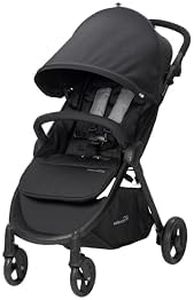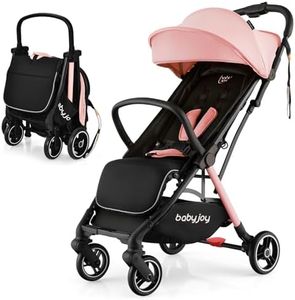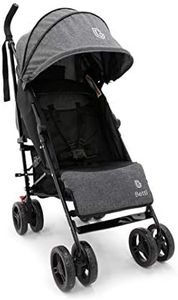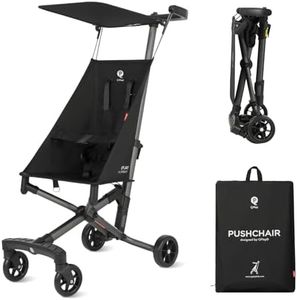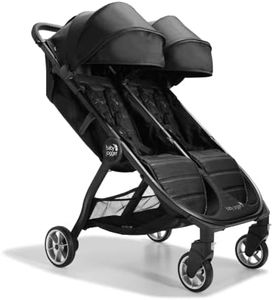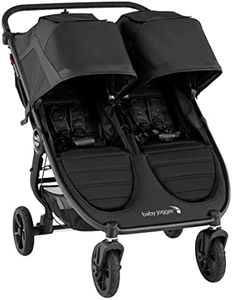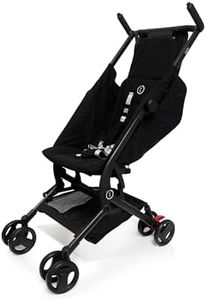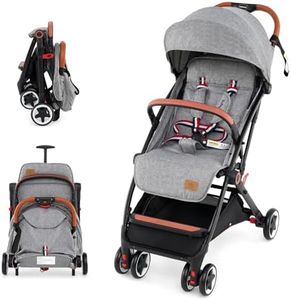We Use CookiesWe use cookies to enhance the security, performance,
functionality and for analytical and promotional activities. By continuing to browse this site you
are agreeing to our privacy policy
10 Best Lightweight Strollers
From leading brands and best sellers available on the web.Buying Guide for the Best Lightweight Strollers
Choosing the right lightweight stroller can make outings with your child much more manageable, especially if you travel often, use public transportation, or frequently need to fold or carry your stroller. Lightweight strollers are designed to be more portable than full-sized models, while still offering comfort and functionality. To select the best fit for you and your child, pay attention to the following key features and understand how each one relates to your lifestyle and needs.Weight of the StrollerWeight determines how easy it is to carry, lift, and maneuver the stroller. Lightweight strollers usually fall in the range of 10 to 20 pounds. Those at the lighter end are easiest to carry up stairs and lift in and out of cars, making them great for travel or city living. Heavier lightweight strollers may offer more comfort features but are less portable. If you anticipate carrying the stroller often or need to navigate crowded or uneven areas, a lighter option will suit you best.
Fold MechanismThis refers to how the stroller collapses for storage or transport, which affects convenience and usability. There are different folding mechanisms: some require two hands and multiple steps, while others can be folded with one hand. One-handed or quick fold strollers are ideal if you’ll frequently need to pack up while holding a child or other bags. If folding speed isn’t as important, a more traditional fold may be sufficient.
Seat Recline and ComfortSeat recline describes how far back the stroller seat can go, affecting your child’s comfort if they nap on the go. Some lightweight strollers have multiple recline positions, and a few offer a near-flat recline suitable for younger babies. Others may only offer an upright or lightly reclined seat, which works best for older babies and toddlers. Choose a stroller with greater recline if your child naps during outings or if you have a younger baby.
Harness SystemThe harness keeps your child secure. Most strollers use a five-point harness for safety, which includes straps over the shoulders, waist, and between the legs. A stroller with a secure, easy-to-adjust harness is essential, especially if your child is very young or moves around a lot. For older toddlers and short trips, harness comfort and ease of use may take higher priority.
Storage Basket and PocketsThe storage basket under the seat or additional pockets provide space for diaper bags, groceries, or personal items. Basket sizes vary from very small to spacious; some lightweight models sacrifice size for compactness. If you typically carry a lot with you, look for a stroller with a larger, easily accessible storage area. For short trips or minimal packing, a smaller basket may be sufficient.
Canopy CoverageThe canopy protects your child from sun, wind, and rain. Canopies range from small to extra-large and may feature peek-a-boo windows so you can see your child. If you spend significant time outdoors or in sunny climates, opt for a stroller with a larger, adjustable canopy. If most outings are indoors, smaller canopies might suffice.
Maneuverability and WheelsManeuverability refers to how easily the stroller can be pushed and turned. Wheel size and suspension impact this, with larger wheels and some suspension offering a smoother ride on rough surfaces. If you need to move through crowded spaces, tight corners, or uneven terrain, prioritize easy steering and good wheel quality. For smooth pavements and simple routes, basic wheels are often enough.
Age and Weight LimitThis spec indicates the minimum and maximum size and age the stroller is designed to accommodate. Lightweight strollers typically start from 6 months up to around 50 pounds. Some models are suitable from birth if they offer full recline or car seat compatibility. Make sure the stroller suits your child’s current age and size, and consider how long you plan to use it.


